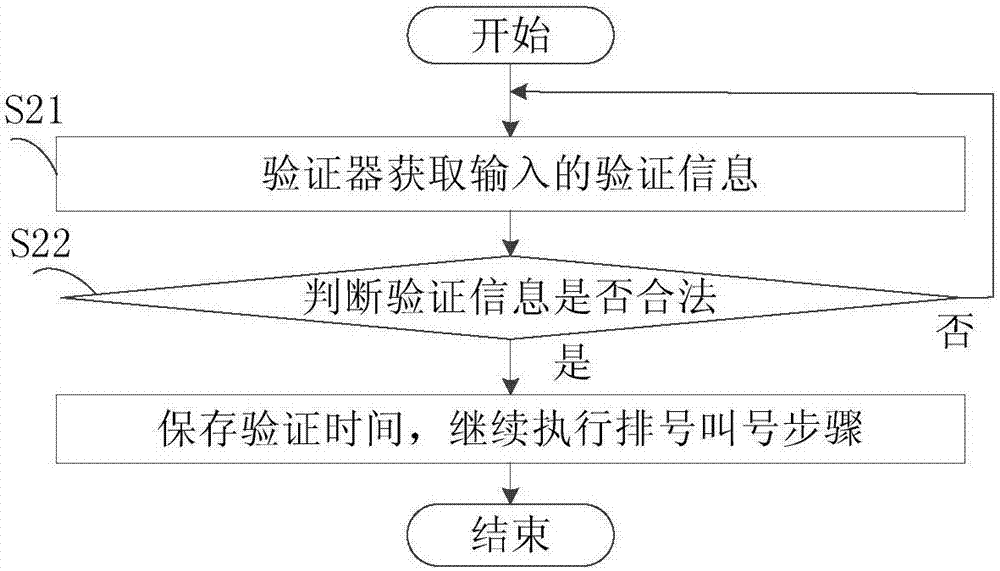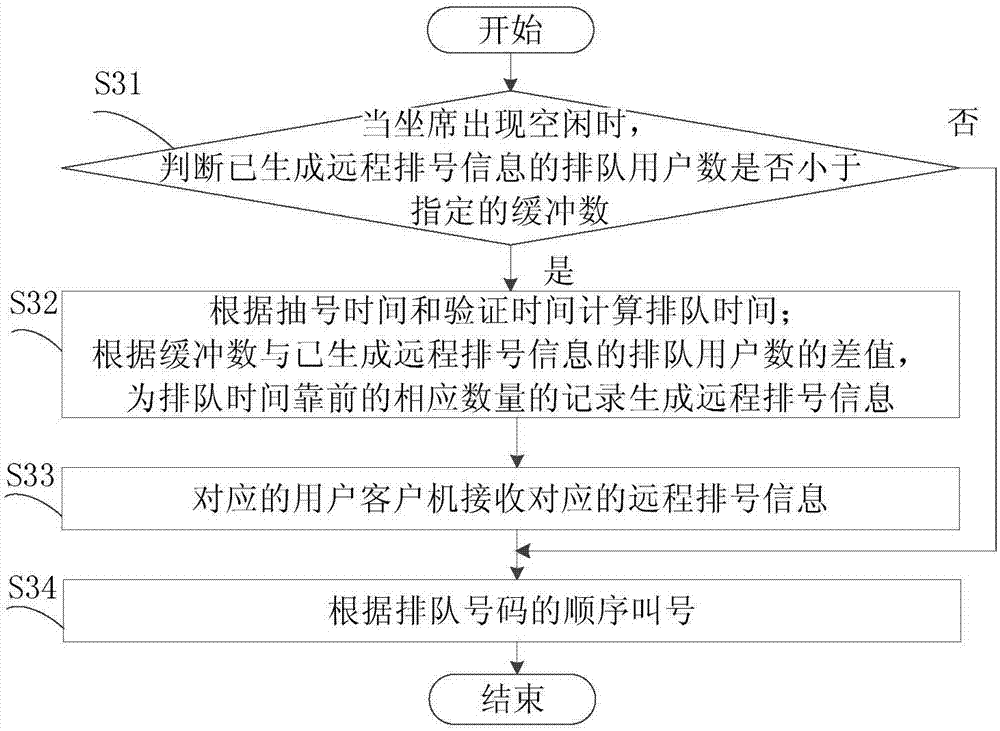A number queuing verifying method and system
An authentication method and an authentication system technology, which are applied in the field of remote number-drawing and queuing authentication methods and systems, and can solve problems affecting service efficiency, user queuing sequence conflicts, remote reservation value discounts, etc., and achieve the effect of saving queuing time.
- Summary
- Abstract
- Description
- Claims
- Application Information
AI Technical Summary
Problems solved by technology
Method used
Image
Examples
Embodiment 1
[0091] figure 1 It shows the flow of remote number drawing in the remote number drawing queuing authentication method, including the following steps:
[0092] In S11, the user connects to the server through the user client, selects a service item and requests a number drawing.
[0093] Among them, the server is usually a computer server, which can be shared by multiple enterprises.
[0094] The server stores business item information. Table 1 illustrates a storage method of service item information.
[0095] Table 1 Example of business item information
[0096]
[0097]
[0098] In Table 1, the business item information is divided into two levels, the first level is enterprise information, and the second level is the further subdivision of the first level business item. In Table 1, the level 1 business items include "A bank", "B restaurant" and "C restaurant". Among them, the "Bank A" business item is further subdivided into two second-level business items, "corpora...
Embodiment 2
[0157] The difference between this embodiment and Embodiment 1 is that the identity authentication process in the remote number drawing queuing authentication method is different, such as Figure 5 shown, including the following steps:
[0158] In S51, the agent client corresponding to the agent receives the identity information of the corresponding user.
[0159] The agent client can be a dedicated device, or a general device such as a mobile phone or a tablet computer. The agent client corresponding to the agent refers to the agent client used by the agent of the agent.
[0160] The corresponding user refers to the user who will receive the service at the seat.
[0161] The user's identity information may include information such as the user's name, photo, ID card number, and telephone number, which are entered in advance by the user and stored in the server. The agent client corresponding to the agent can obtain the identity information of the corresponding user from the...
Embodiment 3
[0166] In this embodiment, leaving and returning are added before the number is called.
[0167] Image 6 The process of leaving is shown, including the following steps:
[0168] In S61, the user connects to the server through the user client and requests to leave temporarily.
[0169] After the user arrives at the scene and the verification information entered is judged to be legal, the user may need to leave temporarily due to personal reasons while waiting for the number to be called. At this time, the user can send a request to leave temporarily to the server. Applying to leave temporarily means that the user has given up queuing, but they can keep their lottery information and queue up again after passing the return verification. The temporary leave request sent by the user should contain information that can uniquely identify the user, such as verification information or user login account information, so as to confirm that the user himself applies for temporary leave....
PUM
 Login to View More
Login to View More Abstract
Description
Claims
Application Information
 Login to View More
Login to View More - R&D
- Intellectual Property
- Life Sciences
- Materials
- Tech Scout
- Unparalleled Data Quality
- Higher Quality Content
- 60% Fewer Hallucinations
Browse by: Latest US Patents, China's latest patents, Technical Efficacy Thesaurus, Application Domain, Technology Topic, Popular Technical Reports.
© 2025 PatSnap. All rights reserved.Legal|Privacy policy|Modern Slavery Act Transparency Statement|Sitemap|About US| Contact US: help@patsnap.com



